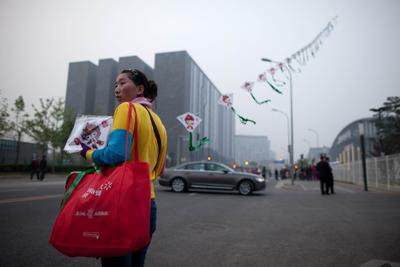China’s shift to a policy agenda of economic rebalancing has been largely welcomed. Yet there are different views about China’s economic ‘imbalances’, particularly regarding what sort of rebalancing is needed or is even possible.
China’s economic imbalances are well known: it has a very high rate of investment, concentrated in heavy-industry (and until recently real estate), at the relative expense of household and government consumption. The problems with this investment-led growth arise from the inefficient composition of investment, the likelihood investments will be highly polluting and energy intensive, and the low share of household income and low social provision. What light does a structural approach shed on China’s economic imbalances and China’s policy approach toward rebalancing?
Modern economic growth is inherently concentrated, uneven and ‘unbalanced’ — within and between firms, countries and regions, and internationally. Consequently, macroeconomic risks, structural constraints and welfare problems are also intrinsic to modern economic growth, and may limit future growth and development. This means economic policy should extend beyond short-term macro management to economic policies that aim to facilitate structural changes that can mitigate risks to growth and improve welfare.
China’s experience since the global financial crisis illustrates the usefulness of this structural approach to policy. With China’s largest international trading partners in the US and the EU in recession, China has been compelled to deepen its economic restructuring. As external demand fell, domestic demand expanded through government-led fiscal stimulus and credit expansion. While the stimulus staved off a dramatic slowdown in China, it also revealed structural problems in the composition of domestic demand — particularly as the investment-led response was concentrated in state and government-led heavy-industry and real estate sectors. While domestic demand needs to replace more of China’s external demand, structural and institutional reform is also needed to shift the composition of domestic demand and growth toward a new pattern of investment and consumption.
From a policy perspective, China’s economic imbalances have become wider and more serious over the past decade because of China’s partial institutional reform agenda since the 1990s. The key to shifting China’s growth and industrial trajectory is a strategy based on enacting market-enhancing institutional reforms in four areas: urbanising China’s migrant workers and labour-market reform; government system reform, with particular reference to local government finances; reform of China’s state-owned enterprise (SOE) system; and reform of the financial system.
Coordinated central and local government efforts to urbanise China’s migrant workforce by removing residency permits and by providing the necessary public and social welfare infrastructure at the national and local levels could greatly accelerate the process of shifting the composition of China’s growth toward consumption. A strategy of urbanising China’s migrant labour force could also lead to more integrated labour markets, which provide a basis for raising real wages above inflation. The rising income of China’s workforce, alongside higher public and social service provision at the national and local levels, is crucial to raising household consumption beyond its current relatively low levels.
Urbanising China’s migrant labour will also place more demand on China’s current government fiscal system at the central and local levels. Portable national social security, and health and pension systems need to be established and fully funded. The central government should take on funding of these to help shift the fiscal incentives for local officials from investment-led growth to greater pubic provision.
Further reform of the SOE system is needed as well. Although the non-state sector now accounts for the majority of industrial output, the SOEs still account for close to half of non-agricultural fixed investment, while employing only a small proportion of the workforce. The SOEs are concentrated in China’s ‘strategic monopoly’ sectors, and reform is needed not only for greater efficiency, but also for redistributing a greater share of earnings and shifting China’s investment pattern to new sectors.
Capital market reforms are needed to shift the provision of credit toward more-efficient and productive uses, to raise the real costs of capital and to improve the operation of domestic capital markets. The key financial reform channel here is China’s exchange rate system, as it constitutes an integral part of China’s approach toward capital account liberalisation and the full convertibility of the renminbi.
A more balanced domestic economy will be conducive to a more balanced external economy for China. And a structural approach to rebalancing therefore suggests a key role for market-enhancing institutional reforms to reduce China’s domestic and external imbalances, and to shift China’s growth path to a new stage of economic transition.
Luke Deer is Research Associate at the China Economy Program, the Australian National University, and lectures Chinese politics at the Department of Government and International Relations, University of Sydney.
Ligang Song is director of the China Economy Program and Associate Professor at the Crawford School of Public Policy, the Australian National University.
This article is based on the authors’ article ‘China’s Approach to Rebalancing: A Conceptual and Policy Framework’, available here in the China & World Economy journal.

